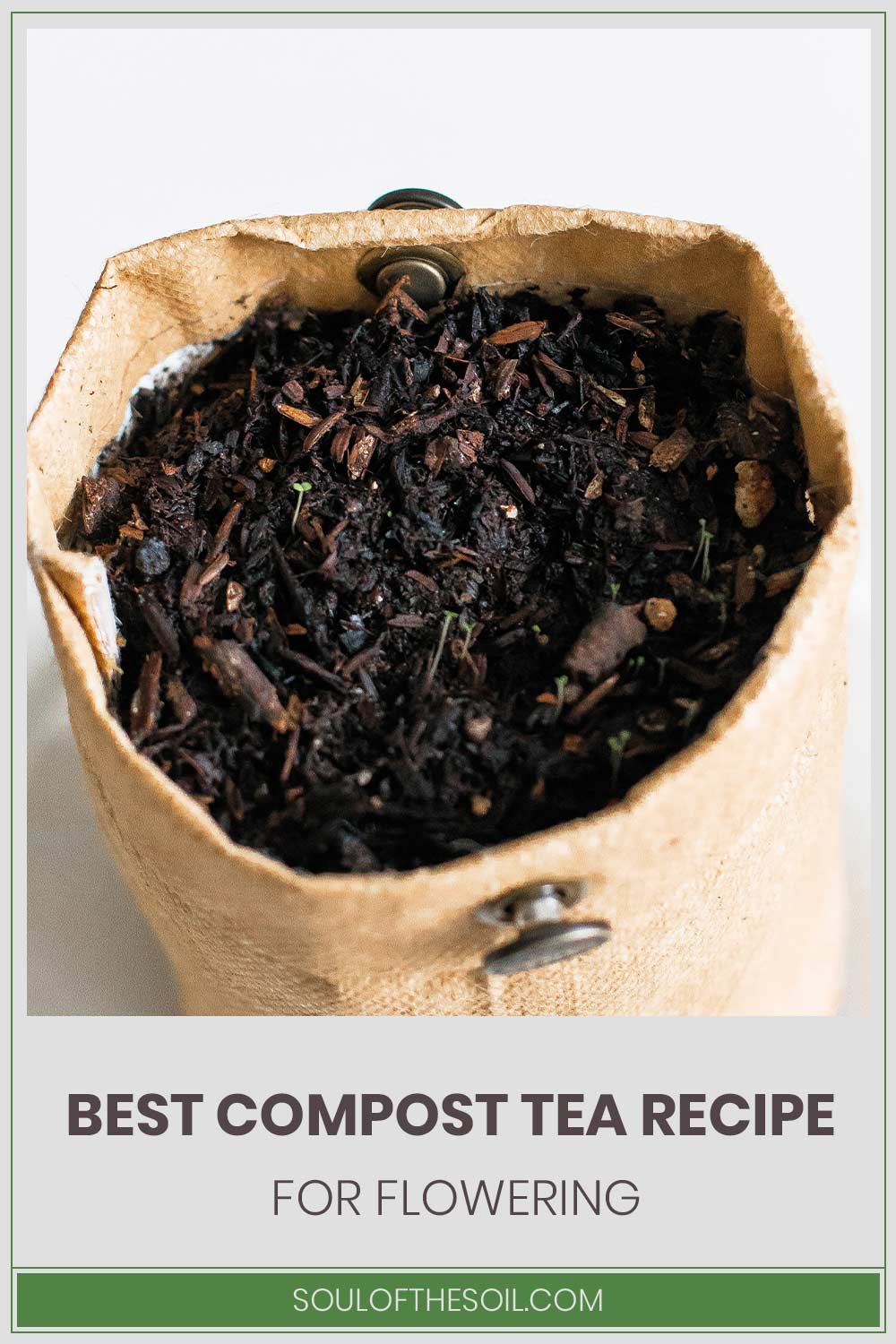Best Compost Tea Recipe For Flowering
We may earn commissions for purchases made through links on our site. Learn more on our about us page.
For those not privy to the idea of composting tea, the idea is similar to the tea bag.
However, these compost tea bags will be made up of a solid mixture of compost material and allowed to soak in water to allow the organic material to seep into the liquid, adding plant growth nutrients.
After a few hours or days, the compost material is removed from the water, which is then used to promote the growth of crops and other plant life lucky enough to drink this tea.

What Ingredients Do You Need?
There are going to be different recipes converting the four different types of compost tea; here are the four different types and the unique ingredients they require:
- Aerobic Compost Tea – Actively Aerated Compost Tea (AACT) is the most commonly used and recommended type of compost tea and uses regular compost materials but requires oxygen to facilitate the steeping process.
- Anaerobic Compost Tea – A simple way of making compost tea, including bacterial and bloom (fungal) tea types, only requires the simplest materials and does not require an oxygen source.
- Bokashi Tea – The liquid that is drained during the fermentation and composting process. This compost tea will be rich in microbes and nutrients that benefit plants and soil.
- Manure Tea – Probably the least pleasant of the four types of compost tea, this stink mixture will include the risk of E. coli, so this tea is not recommended for food-yielding plant life.
Step-by-Step Guide on Making Compost Tea for Flowering
Here is a simple how to make compost tea:
Gather Water – Three gallons of water will fit in a typical five-gallon hardware store bucket but remember to use unchlorinated sources. If forced to use a tap, allow the bucket of water to sit for several hours to allow the chlorine to break down.
Setting up the bucket with an oxygen source and a pump aerator to move five gallons of material would be ideal. Make sure that any excess water will not run back into the pump.
Then, add compost material to the bucket, be sure to only fill to the halfway point, and refrain from packing down any compost to allow aeration.
Ensure the source compost comes from well-aged piles, unfinished decomposition cycles will contain harmful pathogens to the plants.
Fill with water, leaving room to stir in an ounce of unsulphured molasses to provide food for the beneficial bacteria and microorganisms.
What Should You Pay Attention to?
When collecting ingredients, be sure to get materials prepared correctly and ready to be used before beginning any tea-making processes.
Compost must be well-aged to avoid the killing of beneficial bacteria and microorganisms in the tea and should smell earthy, almost sweet.
Another thing to be aware of is the water source, which should be from non-tap water sources. Chlorine, in the water, or any other water filtering chemicals, will act like unready compost and kill the good bacteria and other carbon materials and microorganisms.
When is the Best Time to Make it?
The best time to create this mixture is in preparation for the growing season or, if indoors regularly, to create a rotation of the compost materials.
With outdoor setups, the springtime melting season will provide a renewed opportunity to grow crops, herbs, medicinal plants, and other plant life and soil benefits procedures.
Many Farm and growing plant operations will have regular scheduled compost tea watering procedures that are in tune with the crops being grown and the nutrient needs of those plants.
How Long Does it Take to be Useful for Flowering?
The process of making tea will take years to complete, starting with the creation and maturation of the compost heap.
The actual brewing of the tea, mixing and steeping, will take around three days to complete and should be used within a thirty-six hour period for maximum benefit.
As fast as referring to the reaction time of the compost tea water on the plants is almost immediate as the liquid is absorbed into the soil and drunk by the roots of the vegetation.
Final Thoughts on Best Compost Tea Recipe for Flowering
There are going to be many different ways to create specialized compost piles and soils. The advanced level of composting will take food remnants and use them from crops, and similarly along the lines of this type of thinking.
Be sure to engage knowledgeable people when building a new compost pile. Structure tips and other useful tips might surprise you.
The key is creating an environment conducive to the healthy and beneficial bacteria and microorganisms with which plant life thrive.



Leave a Reply
You must be logged in to post a comment.